FEATURE-Economic crisis in Sri Lanka: What can we learn from other countries?
By Prof. Samson Ekanayake
A lot has already been published about the worsening economic crisis in Sri Lanka. Many authors have convincingly argued that the misguided, short-sighted policies and actions of the present government exacerbated the persistent and COVID-19-induced economic problems of the country. The Central Bank, Departments of Treasury and Inland Revenue, the ministries of Finance, Trade, and Agriculture have been apportioned with the bulk of the blame for the current situation.
Several recent articles have identified the following as the contributory factors for the current situation:
- An economic policy which undermines the open-market policy that has been pursued by previous governments (e.g., selective import taxes and import quotas)
- A policy of import substitution without a proper evaluation of costs and benefits (for industry and agriculture, e.g., for fertilizer and chemicals)
- An over-ambitious expansionist monetary policy (e.g., excessive money printing, low interest rates)
- A fiscal policy that lacks discipline (huge budget deficits, excessive borrowing).
- An unpragmatic foreign exchange policy (e.g., interventions to fix the value of the Rupee, controlling of foreign exchange transactions)
- Lack of a clear policy for the management of foreign debts of the government (e.g., stubborn refusal to apply for IMF loans, over dependence on swaps)
- An overgenerous taxation policy (e.g., increasing of income tax thresholds, reduction of corporate tax, and good and services tax rates, granting of tax concessions)
- An interventionist policy for essential consumer items (e.g., price controls, selective and arbitrary reductions of import duties)
- Lack of a clear policy and action for the public sector (e.g., excessive recruitments, waste, corruption)
- Lack of a policy to guide the selection of long-term investments projects of the government (lack of criteria for selection and prioritising, absence of genuine economic analysis)
Why narratives? Why history?
The popular media, like the one in which this article is published, is not seen by most academics and professionals as an appropriate or worthwhile place to make an in-depth, rigorous analysis of economic issues. However, the alternative, i.e., publishing in academic or professional journals on the subject, is unlikely to help getting the attention of the Sri Lankan policy makers (because they do not seem to read such journals) or the general public (because the articles therein are not written for them). If possible, most authors would like to reach both the policy makers and the public when the aim of their writing is to convey a message to ‘make a difference’. In this article, a narrative approach has been adopted to convey the author’s message to both the policy makers and the general public. Why history? Because in hindsight one can see what has worked and what has not. Hindsight has ‘20-20 vision’!
In the following sections, stranger-than-fiction yet real stories are told about four selected countries. Some of these stories highlight the positive outcomes of prudent economic policies/actions. Others highlight the negative outcomes of unwise economic policies/actions. It is left to the readers to draw parallels and contrasts between the policies and actions of these countries and that of Sri Lanka.
Poverty in North Korea
North Korea was established in 1948. Both North Korea and South Korea suffered from the massive destruction caused during the Korean War (1950-53). However, North Korea’s economy remained ahead of South Korea until the late 1970s. (nytimes.com/world/Asia/korea-history)
The father of the nation Kim Il-Sung, the Leader and the President from 1948 -1994, followed an ideology similar to the Chinese Leader Mao Tse Tung’s. Kim Il-Sung was respected by the people. He and other senior members of the Central Committee spent long periods of time instructing and interacting with the workers. The objective of this interactive method, named Ch'ŏngsan-ni, was to combat bureaucracy and formality. It also provided opportunities for workers and farmers to present their grievances and ideas directly to the leaders. The regime always wanted to show to the world that the country was doing well. The diversion of resources to build highways, theatres, hotels, airports, and other facilities to host the Thirteenth World Festival of Youth and Students in July 1989 had a negative impact on industrial and agricultural development for a long time (Wikipedia).
Until the early 2000s the official retail sector was mainly state controlled under the direction of the People's Services Committee (The Guardian, 11 July 2016). Consumer goods were few and of poor quality, with most provided on a ration basis. There were state-run stores and direct factory outlets for the masses, and special shops with luxuries for the elite—as well as a chain of hard-currency stores. Experimentation in small scale entrepreneurship took place from 2009 to 2013. In 2014, the Enterprise Act was amended to allow state-owned enterprise managers to engage in foreign trade and joint ventures, and to accept investment from non-government domestic sources. Managers in state-owned industries or farms were also free to sell or trade excess production. Managers could also find investment for expansion of successful operations. However, in 2017, Dr. Mitsuhiro Mimura, Senior Research Fellow at Japan's Economic Research Institute for Northeast Asia, who had visited North Korea 45 times, described it as the "poorest advanced economy in the world" (Wikipedia). Between 2017 to 2019, the North Korean GDP decreased by 10 per cent.
North Korea sold bonds internationally in the late 1970s. It defaulted on its bonds in1984. By 2012, North Korea's external debt had grown to an estimated US$20 billion. The lack of foreign exchange to purchase spare parts and oil for electricity generation left many factories idle (Park, Ki-Tae, 2010). The shortage of foreign exchange caused by a chronic trade deficit, a large foreign debt, and dwindling foreign aid has constrained its economic development.
Food scarcity has been a regular occurrence in North Korea. In the 1990s, the lack of pumped water for irrigation and lack of chemical inputs, contributed to reduced yields. Access to chemical fertiliser declined, but the use of compost and other organic fertiliser was encouraged. From 1994 to 1998, North Korea suffered a famine which paralysed many economic institutions. The military was deployed to direct production. Decrease in production affected the quantity of food available through the government distribution system (PDS). Shortages were compounded when the government imposed further restrictions on collective farmers. When farmers were mandated by the government to reduce their own food allotments from 167 kilograms to 107 kilograms of grain per person each year, they responded by withholding grain. The government decreased daily rations for consumers to 150 grams in 1994 and to as low as 30 grams by 1997. PDS failed to provide any food from April to August 1998 and the government publicly announced that the PDS would no longer distribute rations and consumers were left to their own ways to find food. In 2002 and 2010 private markets were progressively legalised for food sales and urban and farmer markets were allowed. From 2009 to 2013, daily per person food rations averaged at 400 grams. As of 2019, this number had been further reduced to 312 grams per day (United Nations Survey in 2019).
Since mid-1980s North Korea began to place an increasing emphasis on foreign trade, and direct foreign investment through joint ventures. It created Special Economic Zones (SEZ) but investment in these zones has been slow. Problems with infrastructure, bureaucracy, uncertainties about the security of investments, and viability have hindered progress.
In 2015, exports to China were $2.3 billion. This was 83% of total exports of $2.83 billion.
An introduction to Nicholas Eberstadt’s book on North Korea provides a clear snapshot of the country: “Viewed from afar, North Korea may appear bizarre, or positively irrational. But …..there is a grim coherence to North Korea's political economy, and a ruthless logic undergirding it--one that unreservedly subordinates economic welfare to augmentation of political power. Thus, paradoxically, even as official policies and practices consign the [North Korean] economy to a perilous realm between crisis and catastrophe, the country's leadership maintains unchallenged domestic control and has actually managed to increase its international influence. Through painstaking collection of hard-to-uncover data and careful analysis, Eberstadt provides a quantitative tableau of North Korea's terrible failure in its economic race against South Korea; its stubborn adherence to policies all but guaranteed to stifle growth and undermine economic performance; and the longstanding official effort to ignore, or mitigate, pressures for economic reform.” (https://www.routledge.com/The-North-Korean-Economy-Between-Crisis-and-Catastrophe/Eberstadt/p/book/9781412810524)
In 2020, the per capita income of North Korea was US$ 1,700. About 60 per cent of the population lived below the poverty line. It remains the world's most centrally planned and closed economy. About 24% of its GDP is spent on the military. The country is at the top of the ladder of autocratic countries in the world. The regime is seemingly popular among the people who are almost completely isolated from the outside world. A number of countries and international bodies have imposed sanctions against North Korea as a protest against its nuclear weapons programme.
In contrast, South Korea has achieved remarkable success in combining rapid economic growth with significant poverty reduction. The policies of the South Korean government resulted in real gross domestic product (GDP) growth averaging 7.3% annually between 1960 and 2019. South Korea's nominal GDP is around 54 times greater than that of North Korea. South Korea, which had a similar per capita income to that of North Korea until mid-1970s ("The World Economy a Millennial Perspective", OECD Development Studies Centre) achieved a per capita income of US$ 31,489 in 2020. South Korea is one of the few countries that has successfully transformed itself from a low-income to a high-income economy and a global leader in innovation and technology. (worldbank.org/en/country/korea/overview)
Lessons for Sri Lanka
The problem lies not necessarily in the dynastic rule (from grandfather to son to grandson) but in the policies of the government.
One of the lessons that can be learnt by Sri Lanka is that half-hearted, ad-hoc economic policies are bound to fail sooner or later.
China after Mao Tse Tung (Mao Zedong)
The Peoples Republic of China, despite its propaganda, was finding it difficult to feed its masses. Farmers in communes engaged in “shirking” (not putting best efforts) behaviours; the economy had been stagnating. After the death of Mao in 1976 the Communist Party (CCP) led by Deng Xiaoping (1978 -1989) turned to ‘free enterprise’ and market-oriented reforms to salvage the failing economy. The CCP opened the country to foreign investment and technology, and to the competitive global market. China provided economic incentives to people and institutions. The CCP and the successive leaders of the country still uphold and continue to strengthen these policies. China is one of the two superpowers, and according to many economists, it is expected to become the largest economy in the world by 2030.
Lessons for Sri Lanka
Irrespective of the ideology and the system of the government, the fundamental nature of the ‘economic’ behaviour of people cannot be suppressed without facing adverse economic consequences. Free enterprise, markets, competition, incentives, are some of the prerequisites for economic prosperity.
Success story of Singapore
Singapore is one of the most advanced and competitive economies in the world today. Singapore consistently followed an open-market (free-trade) economic policy coupled with sound monetary and fiscal policies and financial management practices. It created an environment to attract foreign direct investments and multinational companies. As Milhove, Dean of INSEAD, has succinctly put “Lee Kuan Yew, the prime minister of Singapore from 1959 -1990, performed a miracle transforming Singapore from one of the poorest countries in the world in the 1960s to being among the most advanced today. His main contribution, and the key to his success, was that he understood that in order to put Singapore on a sustainable growth trajectory one needs much more than sound economic policy. Any policy can be reversed, any incentives for growth can be dismantled. Mr Lee built a country whose institutional set-up is unparalleled. This includes the rule of law; efficient government structures; the continuous fight against corruption; and overall stability.” (Ilian Milhov, 2015, see, www.bbc.com/news/business-32028693).
The per capita income of Singapore in 2019 was US$ 65,640 (Sri Lanka Rs. 13,456,200 at the current exchange rate of Rs. 205). The per capita income of Sri Lanka was US$ 3,852 (Rs. 789,660 at the same rate of exchange) (data.worldbank.org). Singapore’s per capita income is 17 times that of Sri Lanka. This is perhaps the best indicator one can use to quantify the extent of economic mismanagement by the successive governments in Sri Lanka. Sri Lanka had more opportunities and more resources than Singapore at the start.
Lessons for Sri Lanka
Sound economic policies, the rule of law, efficient government structures and professional management have been pillars of Singapore’s economic success.
In Singapore the reins were passed from the father to son, but both followed sound, market-oriented economic policies in a consistent and dynamic manner.
In contrast, the incapable, self-interested, short-sighted leadership; regressive economic policies; mismanagement; and widespread corruption are the main causes of Sri Lanka’s economic failure.
Spectacular collapse of Zimbabwean economy and its dollar
Collapse of the economy
Zimbabwe was once known as the "Jewel of Africa" for its great prosperity. Robert Mugabe became Prime Minister of Zimbabwe in 1980, following the end of white minority rule. He was the President from 1987 until 2017. Under Mugabe's authoritarian regime, the state security apparatus dominated the country (Wikipedia). The country experienced an economic meltdown and a hyperinflation.
In 2000, Zimbabwe embarked on a land redistribution programme to return the white-owned land to the black people. The new owners, mainly consisting of indigenous citizens and several prominent members of the ruling party, were inexperienced or uninterested in farming, thereby failing to retain the highly efficient management practices of the whites. Short term gains were achieved by selling the land or equipment. The lack of agricultural expertise triggered severe export losses and negatively affected market confidence. Much of the land became uncultivated. Between 2000 and 2007, agricultural output dropped by 51% and industrial production dropped by 47%., and the national economy contracted by 40%. The Government attributed Zimbabwe's economic decline to sanctions imposed by the Western countries.
A nurse's salary in September 2006 was Z$12,542 (12 US cents). Unemployment was around 94%. In January 2013 the Finance Minister announced that the government had just US$ 217 in its account (BBC News. 31 August 2018). The Reserve Bank issued large amounts of treasury bills and continued ‘money printing’ to support the government's excessive spending. This added to the money supply and in effect devalued Z$. Inflation began to run amok. The peak month of hyperinflation occurred in mid-November 2008 with a rate estimated at 79,600,000,000% per month, with the year-over-year inflation rate reaching an astounding 89.7 sextillion percent (IMF). This resulted in one US$ becoming equivalent to Z$2,621,984,228 (Investopedia).
Collapse of Zimbabwean dollar
Zimbabwe began experiencing severe foreign exchange shortages as well. By February 2004, Zimbabwe's foreign debt repayments had ceased, resulting in compulsory suspension by the IMF. The official rate to the US$ was fixed at Z$9,000 and Z$17,500 in 2005, and at Z$101,946 in 2006 when the black-market price of US$ was Z$550,000. By the time the Z$ was officially abandoned in 2009, a Z$100 trillion note was worth only about US$38. By comparison, in 1996 the rate of exchange was Z$9.13 per US$ (Investopedia).
Meanwhile, the Reserve Bank continued printing Z$ notes in increasingly higher denominations:20,000 (29 September 2008); 50,000 (13 October); 1 million (3 November); 10 million(2 December); 100 million (4 December); 200 million (9 December); 500 million (11 December); 10 billion (19 December); 1 trillion (17 January 2009) and 100 trillion by end of January 2009, As this cannot be continued any longer (perhaps because the note was long enough contain any more zeros), on February 2, 2009, a final denomination was implemented by cutting 12 zeroes. Zimbabwe dollar was officially abandoned on April 12, 2009. After that Zimbabwe relied on foreign currency, mainly on US$ notes, for domestic transactions until it introduced a new currency in February 2019 (OANDA).
A picture of one of the last Zimbabwean dollar notes printed by the Reserve Bank of Zimbabwe. The author purchased this note (below) for US$10 from a souvenir shop in Zambia.

Lessons for Sri Lanka
Policies of a government, even if they are intended to correct past injustices and make majority of the people happy, can make or break an economy. Compare Zimbabwe led by Mugabe with South Africa led by Nelson Mandela who became president in 1994. Inflation, which was running at 14% before 1994 fell to 5% by 2004. The budget deficit, which was around 8%, fell to 1.5% in 2004. Interest rates dropped from 16% to under 9%.
The real tax revenues effectively doubled in 10 years, which has enabled the government to expand social welfare. The proportion of South Africans living under the poverty line fell from 12% to 5% by 2010. By 2011, (BBC Business News). South Africa's GDP (nominal) almost tripled to US$416 billion, foreign exchange reserves increased from US$3 billion to nearly $50 billion. Per capita income doubled to US$ 7,274. South Africa still has problems, particularly the income disparity, which is one of the highest in the world, but its economy is in a much better shape than Zimbabwe’s. Nelson Mandela followed a reconciliatory, pragmatic approach. He did not kill the hen (the economy) which laid the eggs!
Money printing (creating money) by the Central Bank of Sri Lanka will not solve the problems created by excessive budget deficits, and excessive domestic and international borrowings. The solution lies in the real economic growth of the country.
Excessive money printing, if there is no commensurate economic growth, will lead to inflation and loss of value of the Rupee.
Hopefully, the readers may have seen some parallels and contrasts in the policies, actions, and results between these countries and that of Sri Lanka.
History can be a good teacher if we care to listen. It is time for the policy makers and the government to listen.
(The author is a former Head of Finance and Financial Planning disciplines at Deakin University Australia. He has held several senior management positions in academia, commerce, and industry during a career spanning over 40 years. He can be reached at: sameka50@gmail.com).
-
Still No Comments Posted.



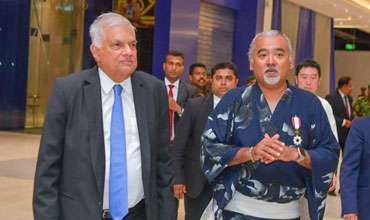



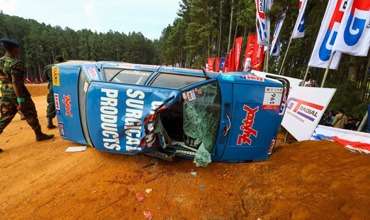
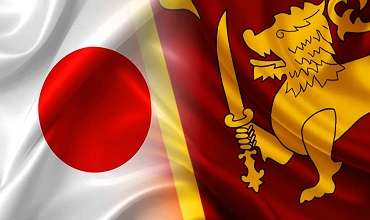
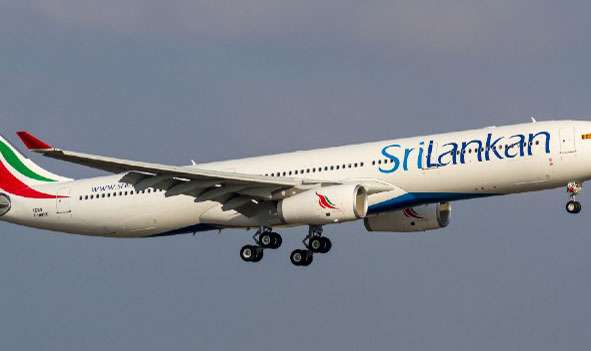

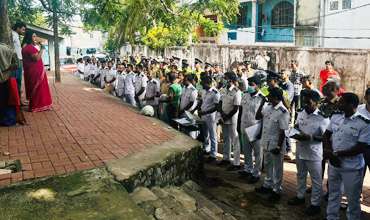
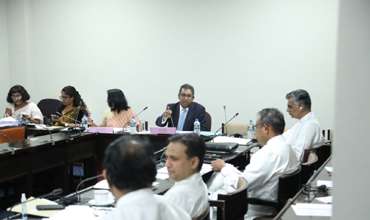
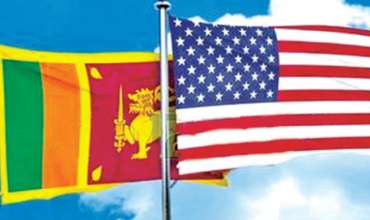

Leave Comments